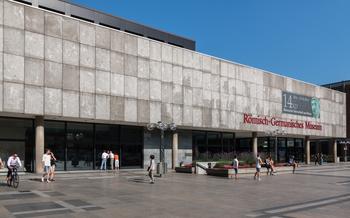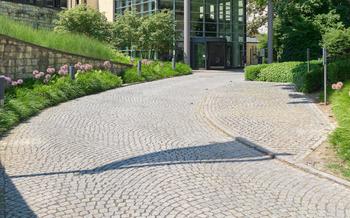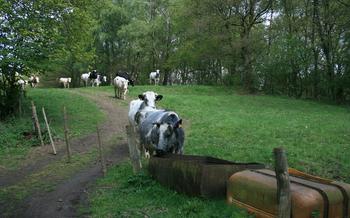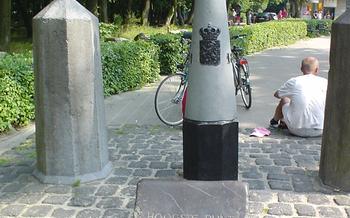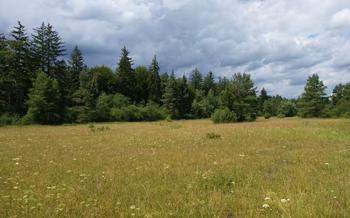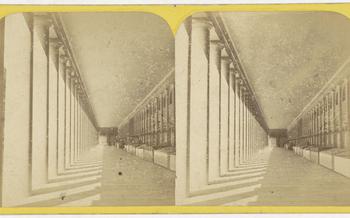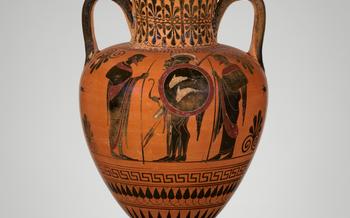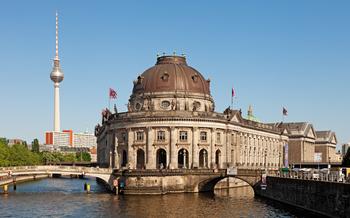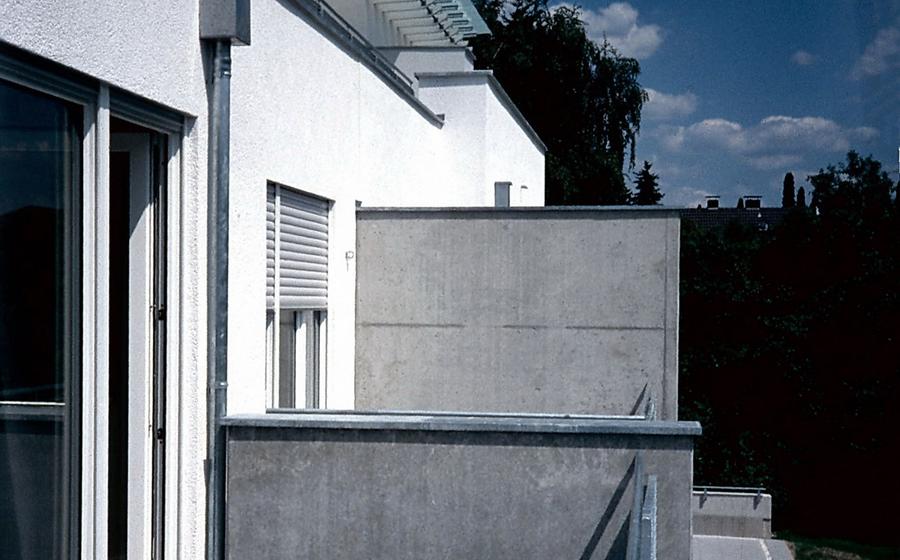
Terra Vulcania Geological Park
- Terra Vulcania Geological Park: An Overview
- Educational and Scientific Value
- Geological Formations
- Hiking and Nature Trails
- Flora and Fauna
- Cultural Heritage
- Visitor Center
- Interactive Exhibits
- Children's Activities
- Accessibility
- Photography Opportunities
- Seasonal Events
- Sustainable Tourism
- Nearby Attractions
- Insider Tip: Unveiling Hidden Gems
Terra Vulcania Geological Park: An Overview
Nestled in the heart of the Eifel region, Germany, the Terra Vulcania Geological Park is a unique natural wonder that offers a glimpse into the Earth's volcanic past. Covering an area of over 200 square kilometers, the park boasts an impressive array of geological formations, including volcanic craters, lava fields, and maar lakes. These features, formed millions of years ago by intense volcanic activity, offer valuable insights into the region's geological history and make the park a significant natural history and cultural heritage site.
The Terra Vulcania Geological Park is a testament to the power of nature and the beauty of the natural world. It's a place where visitors can explore the wonders of geology, learn about the Earth's history, and experience the unique landscapes shaped by volcanic activity. Whether you're a nature enthusiast, a geologist, or simply someone looking for a fascinating and educational outdoor experience, the Terra Vulcania Geological Park is a must-visit destination.
Educational and Scientific Value
The Terra Vulcania Geological Park serves as a valuable educational and scientific research center, providing insights into the region's volcanic past and contributing to our understanding of volcanology and Earth's history. The park's geological formations offer a natural laboratory for studying various geological processes, including volcanism, erosion, and weathering. Scientists conduct ongoing research within the park, utilizing its unique landscape to advance our knowledge of Earth's dynamic processes.
The park's educational programs and exhibits cater to visitors of all ages, promoting an understanding of geology and the importance of conservation. Guided tours led by experienced geologists provide in-depth insights into the park's features, while interactive exhibits and hands-on activities engage visitors in a fun and educational way. The park's educational mission extends to schools and universities, with customized programs and field trips designed to inspire the next generation of geologists and naturalists.
Geological Formations
The Terra Vulcania Geological Park is a treasure trove of diverse geological formations, each showcasing a unique aspect of the region's volcanic past. The most prominent features are the numerous maar lakes, formed when magma interacted with groundwater, resulting in explosive eruptions that created craters that later filled with water. The Laacher See, the largest lake in the park, is a stunning example of a maar lake, with its crystal-clear waters and steep, forested slopes.
Cinder cones, formed by the accumulation of volcanic cinders and ash, are another common sight within the park. These conical hills, often with a crater at the summit, provide a glimpse into the violent eruptions that shaped the landscape. The Rodderberg volcano, a well-preserved cinder cone, offers panoramic views of the surrounding countryside from its peak.
Lava fields, remnants of ancient lava flows, are another testament to the park's volcanic history. These vast stretches of solidified lava, often covered in a layer of vegetation, reveal the immense power and destructive force of volcanic eruptions. The lava fields provide valuable insights into the processes that shaped the Earth's surface millions of years ago.
Hiking and Nature Trails
Terra Vulcania Geological Park offers a diverse network of well-maintained hiking trails that cater to hikers of all fitness levels. Explore the park's stunning landscapes along scenic trails that wind through ancient lava fields, past shimmering crater lakes, and to the summits of picturesque volcanic cones.
The park's trail system includes easy, moderate, and challenging routes, ensuring that every visitor can find a suitable path. Beginners can opt for leisurely walks along the lakeside trails, while experienced hikers can embark on more strenuous ascents to the park's highest points.
Before embarking on your hike, be sure to pick up a trail map from the visitor center. The maps provide detailed information on trail lengths, difficulty levels, and points of interest along the way.
For a truly immersive experience, consider joining one of the guided hiking tours led by park rangers. These tours offer a wealth of knowledge about the park's geology, history, and natural history.
Remember to wear comfortable hiking shoes and bring along water, snacks, and appropriate clothing for the weather conditions. And don't forget your camera to capture the breathtaking scenery along the way.
Flora and Fauna
The Terra Vulcania Geological Park is a haven for a diverse array of flora and fauna, thriving amid its unique volcanic landscape. The park's varied habitats, ranging from lush forests to open grasslands and wetlands, support a rich tapestry of plant and animal life.
Notable plant species include rare orchids, such as the lady's slipper orchid, which flourish in the park's calcareous grasslands. The park also provides refuge for a variety of migratory birds, including the Eurasian hoopoe, the European bee-eater, and the common crane. These birds find ample nesting and feeding grounds within the park's diverse ecosystems.
Endangered amphibians, such as the fire-bellied toad and the yellow-bellied toad, also call the park home. These amphibians rely on the park's unique volcanic features, such as the numerous ponds and wetlands, for breeding and survival.
Conservation efforts play a vital role in preserving the park's biodiversity. The park authorities work closely with conservation organizations to monitor and protect threatened species, implement habitat restoration projects, and raise awareness about the importance of preserving the park's ecosystems. Visitors are encouraged to contribute to these efforts by respecting wildlife, staying on designated trails, and avoiding disturbing sensitive habitats.
Cultural Heritage
Terra Vulcania Geological Park is a treasure trove of cultural heritage, embodying the rich history of the Eifel region. Dotted throughout the park are remnants of Roman settlements and medieval fortresses, each telling a tale of the past. The Roman Eifel Aqueduct, constructed in the 1st century AD, stands as a testament to the engineering prowess of the Roman Empire. Its well-preserved remains offer a glimpse into the lives and technologies of the ancient Romans.
The Nürburgring, a legendary racetrack nestled within the park, holds a special place in the hearts of motorsports enthusiasts. Built in the 1920s, it has hosted iconic races and witnessed countless moments of triumph and tragedy. The Nürburgring Museum showcases the history of the track, featuring vintage cars, racing memorabilia, and interactive exhibits.
For those interested in medieval history, the Eltz Castle is a must-visit. Perched on a hilltop overlooking the Eltz River, this 12th-century castle has stood the test of time. Its well-preserved architecture, intricate facades, and stunning interiors offer a glimpse into the lives of medieval nobility.
The Terra Vulcania Geological Park actively engages in archaeological research and excavations, uncovering new insights into the region's past. Visitors can witness ongoing excavations and learn about the latest discoveries that shed light on the park's cultural heritage.
Visitor Center
The Terra Vulcania Geological Park's visitor center serves as a gateway to the park's wonders, providing a wealth of information, exhibits, and educational programs for visitors of all ages.
Inside the modern and spacious visitor center, visitors are greeted by knowledgeable staff who can provide maps, brochures, and guidance on exploring the park. Interactive touchscreens and multimedia displays offer an immersive introduction to the park's geology, history, and natural history, bringing the region's volcanic past to life.
The visitor center also features a variety of interactive exhibits that allow visitors to explore the park's unique geological formations up close. Hands-on activities, such as examining volcanic rocks and simulating volcanic eruptions, provide a fun and engaging way to learn about the park's fascinating features.
Guided tours led by experienced park rangers are available for those seeking a more in-depth exploration of the park. These tours offer insights into the park's geological processes, cultural history, and conservation efforts, ensuring a memorable and educational experience for visitors.
Interactive Exhibits
Enhancing the Visitor Experience through Interactive Learning
Terra Vulcania Geological Park offers a range of interactive exhibits and educational displays that enhance the visitor experience and promote a deeper understanding of the park's unique features. These interactive elements engage visitors of all ages, making learning about geology, volcanology, and natural history an immersive and enjoyable experience.
Virtual Reality
Step into a virtual world and explore the park's volcanic past through cutting-edge virtual reality technology. Immerse yourself in simulations of volcanic eruptions, witness the formation of maar lakes, and soar over the park's stunning landscape from a bird's-eye perspective.
Touchscreens and Multimedia Displays
Interactive touchscreens and multimedia displays provide in-depth information about the park's geology, flora, and fauna. Explore interactive maps, view stunning photographs, and learn about the scientific research conducted within the park.
Hands-on Activities and Workshops
Participate in hands-on activities and workshops designed to engage visitors of all ages. Build your own volcano model, examine rock samples under a microscope, or create your own fossil imprints. These activities make learning about geology fun and interactive.
Educational Games and Quizzes
Challenge yourself with interactive games and quizzes that test your knowledge about the park's geology and natural history. These games are a great way to reinforce what you've learned and make learning a fun and competitive experience.
Children's Activities
Terra Vulcania Geological Park offers a range of activities designed to engage and educate young visitors. Educational programs, workshops, and guided tours are tailored specifically for children, fostering their curiosity and appreciation for the park's unique geological features. Interactive exhibits and hands-on activities bring the park's history and natural wonders to life, making learning an enjoyable and interactive experience. Playgrounds and picnic areas provide opportunities for families to relax and enjoy the park's natural surroundings. The park's commitment to education and its family-friendly atmosphere make it an ideal destination for families seeking a fun and educational day out.
Accessibility
Terra Vulcania Geological Park welcomes visitors of all abilities and strives to provide an inclusive and accessible experience. The park's accessibility features ensure that everyone can explore and appreciate its natural wonders.
Designated parking spaces for visitors with disabilities are available near the visitor center, providing convenient access to the park's facilities. The visitor center itself is wheelchair-accessible, with ramps and elevators allowing easy movement throughout the building.
Visitors with limited mobility can enjoy the park's stunning scenery through accessible trails. These trails are designed with gentle slopes and wide paths, making them suitable for wheelchairs and mobility scooters. Visitors can explore the park's diverse geological formations, including maar lakes, lava fields, and volcanic craters, without encountering significant barriers.
In addition, the park offers guided tours that are tailored to the needs of visitors with disabilities. These tours provide detailed explanations of the park's geology and history, ensuring that everyone has the opportunity to learn and appreciate the unique features of Terra Vulcania.
Photography Opportunities
Terra Vulcania Geological Park is a haven for photographers, offering a diverse range of stunning landscapes and unique geological formations that serve as captivating subjects for photography. The park's volcanic craters, lava fields, and maar lakes create dramatic backdrops for capturing the beauty of nature's raw power.
For the best photography experience, plan your visit during the golden hours of sunrise or sunset, when the warm light enhances the colors and textures of the volcanic landscapes. The park's many viewpoints offer panoramic vistas that showcase the full extent of its geological wonders.
One of the most iconic spots for photography is the Laacher See, a picturesque maar lake surrounded by lush forests and vibrant wildflowers. The lake's tranquil waters reflect the surrounding scenery, creating mirror-like images that are perfect for capturing serene and idyllic shots.
Another must-visit location for photographers is the Rodderberg volcano, a dormant cinder cone that offers breathtaking views from its summit. The rugged slopes and jagged lava formations provide a dramatic backdrop for capturing the essence of volcanic activity.
For those seeking unique perspectives, venture off the beaten path and explore the park's lesser-known corners. Hidden gems such as the abandoned quarries and secluded lava fields offer opportunities to capture intimate and captivating images of the park's geological features.
Seasonal Events
Enrich your visit to the Terra Vulcania Geological Park by participating in seasonal events that celebrate the park's natural beauty and cultural heritage. During springtime, the park comes alive with a vibrant display of wildflowers, transforming the landscape into a colorful tapestry. Guided walks led by park rangers offer insights into the park's diverse flora and the unique adaptations of plants to the volcanic environment.
As autumn approaches, the park's foliage transforms into a mesmerizing palette of warm hues, creating a breathtaking spectacle. Themed exhibitions showcase the park's geological wonders and the cultural traditions associated with the region. Workshops and hands-on activities allow visitors to delve deeper into the park's history and its significance as a natural and cultural heritage site.
In the winter months, the park takes on a magical charm as snow blankets the landscape, creating a picturesque winter wonderland. Guided snowshoe hikes provide a unique opportunity to explore the park's hidden corners and observe wildlife in their winter habitats. Seasonal events during this time often include traditional winter festivities, such as Christmas markets and lantern walks, offering a glimpse into the region's rich cultural heritage.
To stay updated on seasonal events and activities, check the park's website or contact the visitor center. These events offer a delightful way to experience the park's diverse offerings and create lasting memories of your visit.
Sustainable Tourism
Terra Vulcania Geological Park is committed to promoting sustainable tourism practices that protect and preserve its unique natural and cultural heritage. Visitors are encouraged to embrace responsible tourism by respecting wildlife, staying on designated trails, minimizing waste, and reducing their environmental impact. The park has implemented several eco-friendly initiatives, including waste reduction programs, recycling facilities, and the use of renewable energy sources.
As a visitor, you can contribute to sustainable tourism by making conscious choices. Avoid littering, bring reusable water bottles and snacks, and support local businesses that prioritize sustainability. By working together, we can ensure that the Terra Vulcania Geological Park remains a pristine and vibrant natural wonder for generations to come.
The park's efforts in sustainability have been recognized through various awards and certifications. In 2021, it received the "Green Globe" certification, a prestigious eco-label that acknowledges the park's commitment to sustainable tourism practices. This recognition reflects the park's dedication to preserving its natural beauty while promoting responsible tourism.
Nearby Attractions
Enrich your exploration of the Eifel region by venturing beyond the Terra Vulcania Geological Park. Discover the picturesque town of Mayen, known for its medieval castle and historic marketplace. Explore the Genovevaburg, a 13th-century fortress perched atop a hill, offering panoramic views of the surrounding countryside. Immerse yourself in the volcanic history of the region at the Lava Dome Museum in Mendig, showcasing fascinating exhibits on volcanic activity and its impact on the landscape. For a unique perspective, embark on a guided boat tour of the Laacher See, Germany's largest maar lake, and marvel at its crystal-clear waters and lush shoreline. Complement your journey with a visit to the nearby Nürburgring, a legendary race track that has hosted iconic motorsports events for over 90 years.
Insider Tip: Unveiling Hidden Gems
For an unforgettable experience, venture off the beaten path and explore the lesser-known corners of the Terra Vulcania Geological Park. Discover the tranquil Holzmaar, a picturesque lake nestled amidst lush forests, perfect for a serene escape. Hike to the summit of the Hochsimmer, the park's highest peak, and be rewarded with breathtaking panoramic views of the Eifel landscape. Unearth the mysteries of the abandoned mine shafts and tunnels, remnants of the region's rich mining history. Embrace the park's tranquility and immerse yourself in the wonders of nature, away from the crowds.
